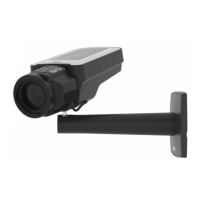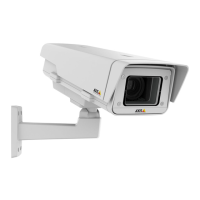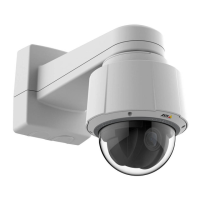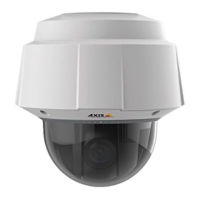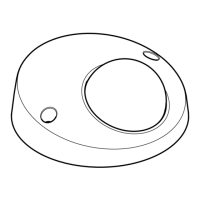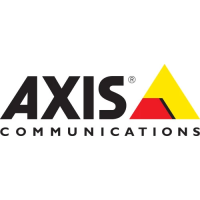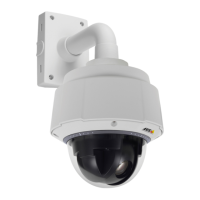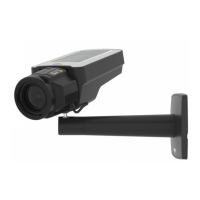
Do you have a question about the Axis Q1615 Mk III and is the answer not in the manual?
| Type | IP security camera |
|---|---|
| Certification | EN 55032 A, EN 61000-3-2, EN 61000-3-3, EN 55024, EN 55035, EN 61000-6-1, EN 61000-6-2, FCC 15 B A, ICES-3(A)/NMB-3(A), VCCI A, RCM AS/NZS CISPR 32 A IEC/EN/UL 62368-1 IEC 60068-2-1, IEC 60068-2-2, IEC 60068-2-6, IEC 60068-2-14, IEC 60068-2-27, IEC 60068-2-78 NIST SP500-267 |
| Languages support | CHI (SIMPL), CHI (TR), DEU, ENG, ESP, FRE, ITA, JPN, KOR, POR, RUS |
| Number of languages | 11 |
| Placement supported | Indoor |
| Connectivity technology | Wired |
| Infrared (IR) cut-off filter | Yes |
| Sensor type | CMOS |
| Number of sensors | 1 |
| Optical sensor size | 1/2.8 \ |
| Focal length range | 2.8 - 8.5 mm |
| Maximum aperture number | 1.2 |
| Bit rate control | Variable Bit Rate (VBR) |
| Total megapixels | 2 MP |
| Maximum resolution | 1920 x 1080 pixels |
| Supported video modes | 1080p |
| Image quality adjustment | Brightness, Contrast, Saturation, Sharpness |
| Video compression formats | AVC, H.264, H.265, HEVC, M-JPEG, MPEG4 |
| Camera pan control | - |
| Camera shutter speed | 1/125000 - 2 s |
| Minimum illumination | - lx |
| Built-in HDD | No |
| Flash memory | 1024 MB |
| Internal memory | 2048 MB |
| Compatible memory cards | MicroSD (TransFlash), MicroSDHC, MicroSDXC |
| Security algorithms | EAP-TLS, FIPS 140-2 |
| Audio system | 2-way |
| Voice codecs | G.711, G.726, OPUS |
| Audio formats supported | ADPCM, PCM |
| Networking standards | IEEE 802.1x, IEEE 802.3af, IEEE 802.5 |
| Ethernet interface type | Gigabit Ethernet |
| Supported network protocols | IPv4, IPv6 USGv6, HTTP, HTTPS , SSL/TLS , QoS L3 DiffServ, FTP, CIFS/SMB, SMTP, Bonjour, UPnP, SNMPv1/v2c/v3 (MIB-II), DNS, DynDNS, NTP, RTSP, RTP, SFTP, SRTP, TCP, UDP, IGMP, RTCP, ICMP, DHCP, ARP, SOCKS, SSH, LLDP |
| Form factor | Box |
| Mounting type | Ceiling/wall |
| Product color | Black, Silver |
| Housing material | Metal |
| Power source type | DC, PoE |
| Power consumption (max) | 12.1 W |
| Power consumption (typical) | 8.3 W |
| Power consumption (Power over Ethernet (PoE)) | 12.95 W |
| Storage temperature (T-T) | -40 - 65 °C |
| Operating temperature (T-T) | -10 - 55 °C |
| Storage relative humidity (H-H) | 5 - 95 % |
| Operating relative humidity (H-H) | 10 - 85 % |
| Harmonized System (HS) code | 85258900 |
| Depth | 58 mm |
|---|---|
| Width | 82 mm |
| Length | 195 mm |
| Weight | 1120 g |
Recommendations and important notes on creating and managing secure passwords.
Steps to ensure the device's firmware is original and secure after a potential security attack.
Procedure for creating the initial administrator account upon first login.
Creating rules to trigger actions (recording, email) based on specific events or conditions.
Configuring IR-cut filter and IR light for optimal performance in day and night modes.
Selecting exposure modes to reduce image flicker and control aperture, gain, and shutter.
Configuring resolution, frame rate, and compression for video streams.
Managing bitrate settings to optimize image quality and storage based on available resources.
Utilizing Zipstream technology for bitrate reduction and optimized storage.
Configuring network settings, including IP addressing, hostnames, and DNS.
Configuring HTTP and HTTPS protocols, including certificate installation for secure access.
Managing certificates for device authentication and secure network access.
Configuring IEEE 802.1x for secure network authentication.
Enabling blocking and setting periods to prevent brute-force login attempts.
Creating new user accounts with specific privileges (Administrator, Operator, Viewer).
Defining rules with conditions and actions to trigger specific events or operations.
Configuring MQTT client settings, including broker, protocol, and connection parameters.
Adding network shares (NAS) for saving recordings and configuring storage parameters.
Using tools for SD card management: Check, Repair, Format, Encrypt, Decrypt, Change password.
Configuring the camera tampering detector to generate alarms on scene changes.
Enabling shock detection to generate alarms when the device is hit or tampered with.
Instructions for downloading and upgrading the device firmware to the latest version.
Procedure for resetting the device to factory default settings, including IP address.
Troubleshooting common issues like firmware upgrade failures and IP address problems.
Instructions for downloading and upgrading the device firmware to the latest version.
Troubleshooting steps for browser access issues, including login and protocol errors.
Resolving login problems, including password loss and certificate errors.
